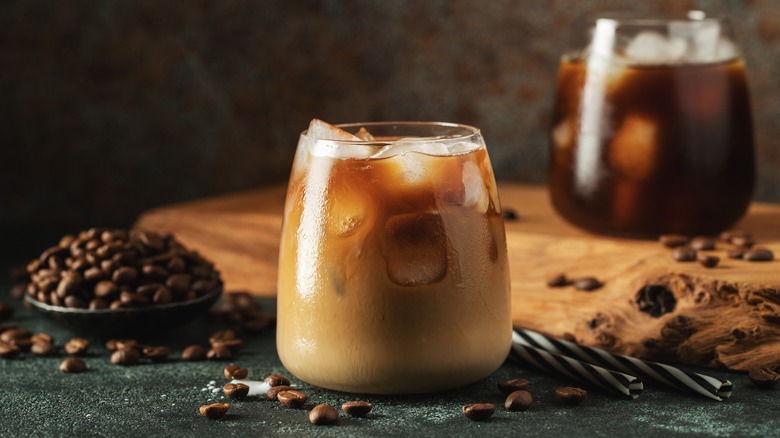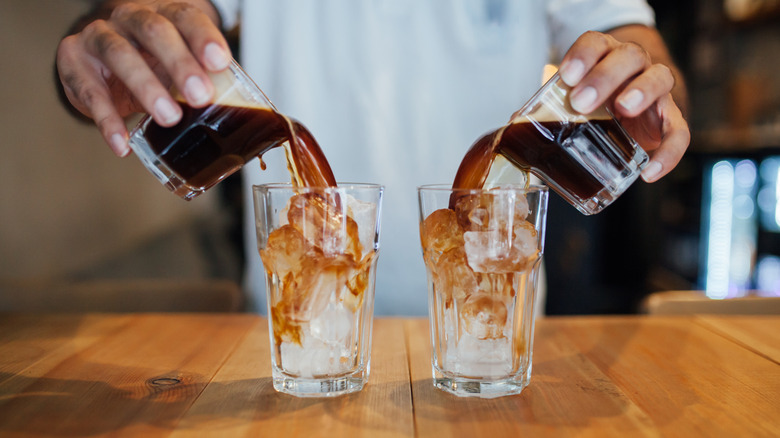The Metal Spoon Trick That Ensures Your Iced Espresso Isn't Watered Down
There are many great things in life, but watery iced espresso is not one of them. Luckily, this is an avertable barista disaster — all you need is a metal spoon. Intercepting the coffee stream with a cold spoon allows the utensil to absorb some of its heat. With this easy trick, instead of falling immediately over the ice, it delays the contact.
Metal is a great heat conductor, knocking a few degrees off drink temperature as a stirring tool alone. Since dilution from melted ice is one of the primary reasons behind watered-down espressos, this lengthens the window to enjoy the beverage at its optimal strength. Simple, yet effective. But whether or not you should "shock" your espresso with immediate ice contact or not is a point of controversy.
Caffeine aficionados go head-to-head over the practice, with some saying it heightens acidity and damages the flavor. Others refer to the process as an optimal method of fast chilling. It's a personal decision, but brewing straight into ice is often seen as one of the leading mistakes you need to avoid when making espressos at home. Play it safe, pour coffee into cold water or milk first, and add your cubes afterward. You can still use the spoon to break the stream and lower the liquid's temperature.
Other methods to prevent watery iced espressos
Alongside having a spoon at the ready, check the roast level of your products. Sometimes, a taste boost is all that's needed to overcome watery-tasting beverages. A darker bean results in easy extraction and often more flavor. It's simple to check — on Nespresso pod roast rankings, the higher the number, the stronger it is.
The main difference between espresso and iced coffee is the potency of a short espresso shot, so don't shy away from high-strength beans. It's good to know the characteristics of each type of iced coffee, as every cup should be different. Controlling temperature and flavor are the quickest ways to take your home-poured iced espresso to the next level.
Tackling under extraction requires more problem-solving skills, but it's a pesky reason behind many watery drinks. Be wary of coarse grinds, as the larger surface area demands more brewing time to truly gain maximum flavor potential. Because of this, it's easy to under-extract from larger grind sizes, resulting in a weaker taste. Similarly, a low extraction pressure can sabotage your chance of a great iced espresso by failing to pull the necessary substances.
So try the spoon trick, but be prepared to analyze your coffee-making more thoroughly — you'll thank yourself later.

